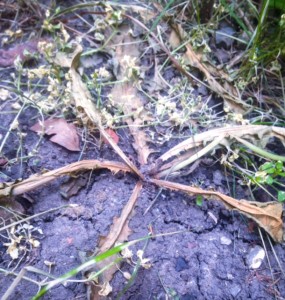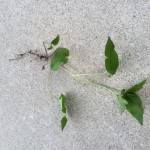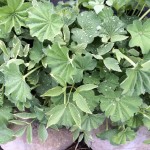The post Common Landscaping Mistakes To Avoid appeared first on Infinity Gardens.
]]>There are a few landscaping mistakes that are commonly made, yet very preventable.
Not Starting With A Plan
It is easy to walk through your local garden center and end up with a cart filled with beautiful plants. This season, do not just buy aimlessly hoping to find a home for your new additions. Start with a plan. Decide which landscape aesthetic you are hoping to attain – minimalist, romantic, modern, country, etc. – and work from there.
Lack of planning can lead to numerous maintenance headaches. A poor design, or one with too many sharp angles, can leading to constant mowing nightmares. Hiring a landscape architect is often well worth the investment, as they can transform your desires into an achievable rendering, as well as provide plant suggestions that you can pass along to your landscape company.
Skipping Prep Work
You would not build a home on unprepped foundation, so you shouldn’t start executing your new landscape without laying out the groundwork for your plants.
Improving your soil quality is something that you can start way before the landscapers begin work. Test your soil and find out which nutrients it is craving, then make any needed pH level adjustments. To make your soil more acidic, add aluminum sulphate or sulphur. Add ground lime to make your soil more alkaline.
Start a compost pile or bin. Adding organic waste to your soil is essential, as it will help produce healthy, flourishing plants. Create a mixture of wet and dry materials. Wet materials include: coffee grounds, chopped leaves, eggs, grains, manure, weeds, fruits and vegetables. Dry materials include: hay, nutshells, paper, straw, pine needles and more.
Once your compost smells like rich soil, add it to your foundation.
Monochromatic Colour Schemes
While you may favour fuschia to violet, too much of a good thing is never pretty. Instead, go for four-season landscape colour. When choosing plants and trees in spring, consider varieties that provide intoxicating color in winter, like Japanese maples and various ornamental grasses. And do not forget springtime varieties, such as tulips, and summer-blooming flowers, like roses.
You may also choose to include hearty heirloom vegetables, such as Swiss chard, cabbage and kale. They survive cold climates and are not hard on the eyes, either.
A seasonal variety of plants for your landscape is most handsome – and important for resale curb appeal.
Forgetting to Factor Size
The day that tree on your front lawn grows so tall that it hits a power line will be a memorable one. Make sure it doesn’t come to this by planning ahead. Make sure your landscape plan does not include tall trees under electrical lines. Another common mistake made in landscaping is to plant tall shrubs under a window. They end up hiding the view. The easiest way to avoid this is to do a little research or hire a landscaper to help you determine the best locations for your preferred plantlife.
When Weeds Go Wild
Weeds will eat up your gorgeous landscaping, as well as your maintenance budget. They compete with other plants for nutrients and water. They may also shorten the lifespan of pavers and stone by growing in mortar cracks. Make sure you have removed most, if not all, of the weeds in your soil prior to planting. You don’t want your seedlings to have to fight for survival.
It is easier to destroy weeds before there are other plants in your garden beds. Whether you prefer to dig or spray, remove these pesky plants before you get started. You can apply a pre-emergent pesticide about three weeks before seeds germinate.
Your Land Is A Backyard Buffet
Grazing deer might be a fun sight for kids to catch, but your newly planted shrubs will end up sparse. To avoid various wildlife from feasting on your landscape, decorate with deer- and rabbit-resistant plant varieties. Your landscaper or local agricultural extension agent can provide you with a list of edibles that critters in your area dislike. An electric deer fence is also an option.
Although it is tempting to simply plant all your favourite flowers without much foresight, make the most of your landscape and plan before you plant. If you have any questions, consult local professionals – Infinity Gardens offers custom estimates on personalized designs.
The post Common Landscaping Mistakes To Avoid appeared first on Infinity Gardens.
]]>The post Organic Weed Killer appeared first on Infinity Gardens.
]]>
Organic Home Made Weed Killer
As many of us know today, chemical herbicides are non eco friendly, a known carcinogen and can be very expensive. After spending hours on
your knees in the blazing sun trying to dig out the invasive species, you
may be tempted to go to the easier less natural option of herbicide.
Before you use pesticides you must try this healthier inexpensive recipe.
1 gallon of white vinegar (5 % acidity)
1 cup of table salt
1 tablespoon of dish soap
In a jug mix a the vinegar, salt and soap until the salt has mostly
dissolved, then either pour onto targeted area or plant. For a more
controlled treatment pour through funnel into a spray bottle.
For prolonged sprayer life, after each use empty the sprayer and rinse the
sprayer as the vinegar will melt the seals.
Try to apply on dry days with no rain (if you are using in grass or near
other plants cover the non targeted species as this is a non selective
killer). You should start to see results within 2 – 3 days. If you get a poor
kill, reapply using slightly more solution. This is another cost effective
option in your weed killing arsenal.
The post Organic Weed Killer appeared first on Infinity Gardens.
]]>The post Saving the Birch Trees appeared first on Infinity Gardens.
]]>
Paper birch (Betula papyrifera) are wonderful addition to a landscape. These trees have an abundant, draping canopy with delicate leaves.
The post Saving the Birch Trees appeared first on Infinity Gardens.
]]>The post Creeping Bell Flower appeared first on Infinity Gardens.
]]>
The post Creeping Bell Flower appeared first on Infinity Gardens.
]]>The post Black Knot Fungus on Mayday trees and Schubert Chokecherries appeared first on Infinity Gardens.
]]>
Black knot (Dibotryon morbosum) is a fungal infection that is
common to the Prunus genus. This genus includes Mayday Trees and Schubert Chokecherries. Black knot disease was first described in 1821 in Pennsylvania. During the 1880’s black knot was the most destructive disease of tart cherries and plums in the United States. The disease was later spread to Canada. This disease is not as destructive as it was historically, but with several wet Calgary spring times and over irrigation the disease is making a return.
The post Black Knot Fungus on Mayday trees and Schubert Chokecherries appeared first on Infinity Gardens.
]]>The post Shade Planting appeared first on Infinity Gardens.
]]>
Shady, damp areas are often a difficult place to maintain a garden. Coniferous (cone bearing trees) tend to create a rather acid soil
environment making plant growth difficult. The soil can be amended with calcium sources. It is better to use decorative mulch, rather than plants under trees. Mulch will prevent root damage to the trees. Under deciduous trees (broad leaf trees) it is not necessarily a desirable place to plant, because of potential root damage to the trees. When you go outside of the drip line (the edge of the branches) the roots are deeper and the soil is less acidic making planting desirable.
Often by looking at a plants foliage, you can tell if it will do well in a damp shady area. Shade plants have large leaves to maximize photosynthesis.
Lily of the valley – Convallaria majalis
Hosta lily’s – Hosta crispula/elata
The post Shade Planting appeared first on Infinity Gardens.
]]>The post Annual Planting appeared first on Infinity Gardens.
]]> Gardeners look forward to the bright, instant flash of colour annual flowering plants bring to their planters and flower beds. The number of cultivars available to the home or commercial gardener is truly abundant.
Gardeners look forward to the bright, instant flash of colour annual flowering plants bring to their planters and flower beds. The number of cultivars available to the home or commercial gardener is truly abundant.
To ensure the success of your newly purchased planting materials, it is important to keep them well watered before and after planting. A cool overcast day is ideal, when transferring young ornamentals to their new environment. A hot sunny day will cause additional shock to transplants, leaving plants wilted or scorched .
Soil should be tilled up and moist prior to planting. If the soil is excessively heavy or sandy, compost or peat can be incorporated. These pre-planting additions will aid in the development of new roots. Slow release granular fertilizers can be added at this time.
When it comes time to remove plants from their cell packs, loosen or slightly score the roots, this will stimulate growth and spread. If roots are not stimulated they will grow and continue to circle them selves causing reduced over all vigour.
Transplants should be planted level with the soil. If annuals are planted too deep rot can occur and if the root ball is left slightly exposed then plant will dry out excessively. The soil should be lightly tamped and watered throughly.
Water soluble fertilizers can be added after planting, if pre-planting fertilizers have not been previously added. Fertilizers for flowering plants should be high in phosphorus, this is represented by the middle number in a fertilizer ratio. These ratios are always printed on the packaging of any fertilizer.
The single most important factor to ensure the survival of annual plantings is to keep them well watered during their initial establishment. Annual transplants have to be watered daily unless it is raining adequately.
The post Annual Planting appeared first on Infinity Gardens.
]]>The post When to Time your Tree Pruning appeared first on Infinity Gardens.
]]>
It is a general rule to prune trees while they are dormant to minimize damage and stimulate new growth.
Fruit bearing trees are pruned during dormancy to reduce crop quantity, but increase the fruits quality. This timing will also aid in new bud formation the following year.
Deciduous trees thrive with a late winter early spring pruning.
The post When to Time your Tree Pruning appeared first on Infinity Gardens.
]]>The post Beautiful Garden Beds appeared first on Infinity Gardens.
]]> on the task of building your own bed, you should keep in mind to have at least 12” of top soil. This will be optimal for your plants root systems to grow and flourish. Be sure you use “Garden Mix” and not just loam to help your plants the proper nutrients for the transition from pots to the ground. Raised beds are recommended because they look beautiful and a good edger will help prevent annoying grass from growing in your beds.
on the task of building your own bed, you should keep in mind to have at least 12” of top soil. This will be optimal for your plants root systems to grow and flourish. Be sure you use “Garden Mix” and not just loam to help your plants the proper nutrients for the transition from pots to the ground. Raised beds are recommended because they look beautiful and a good edger will help prevent annoying grass from growing in your beds.
The post Beautiful Garden Beds appeared first on Infinity Gardens.
]]>The post Timing your Turf Fertilizers appeared first on Infinity Gardens.
]]>
How often you fertilize a home lawn depends on your soil type. Most of Calgary has very rich clay soil. Clay based soils hold nutrients very well, unlike sandy soils that naturally leach fertilizers. Properties in the river valleys tend to have sandy soils.
Add a cool day and irrigation to these application dates and success shall be yours.
By Jacquie Lautermilch
The post Timing your Turf Fertilizers appeared first on Infinity Gardens.
]]>